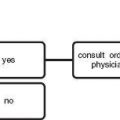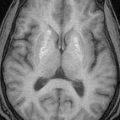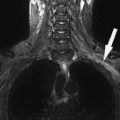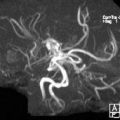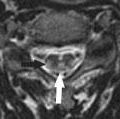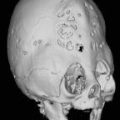Purpose: Evaluation of subdural hematoma, epidural hematoma, stroke, bleed, headaches, initial workup of acute or changing dementia, mental status changes, fractures, trauma, shunt malfunction, new onset of seizures (particularly in adults) hydrocephalus.
Patient Position: Supine.
Scan Type: Preferably sequence; spiral for trauma or if scanning head and face.
Image Acq: 4.5 mm (Seq) or 5 mm (Spiral) x 1.5 mm collimator.
Scan Extent: Skull bases through vertex.
FOV: Sized to include entire skull area.
Technique: Adults: kV: 120; Ref mAs: 250; Care dose: ON.
Peds: kV: 120;
Care dose: ON. Ref mAs:
 0 to 6 months: 100 mAs.
0 to 6 months: 100 mAs.
 6 to 18 months: 125 mAs.
6 to 18 months: 125 mAs.
 18 months to 3 years: 150 mAs.
18 months to 3 years: 150 mAs.
 3 to 10 years: 175 mAs.
3 to 10 years: 175 mAs.
 > 10 years: 200 mAs.
> 10 years: 200 mAs.
Reconstructions:
4.5- or 5-mm axial cerebrum.
4.5- or 5-mm axial bone.
PACS: Transmit all images.
Charge Codes: 3510100.
CPT Code: 70450.
Note: CT of the head is generally obtained 10 to 20 degrees from Reid’s base line (infraorbital rim to top of external auditory meatus) or parallel to the hard palate. Soft tissue views of the posterior fossa are presented with a window width of 110 to 120 Hounsfield units (HU) and a center (level) of 43 HU. In the supratentorial region, a window width of 80 HUand center of 43 HUare helpful. Bone windows are presented with a width of 3,500 HU and a center of 700 HU. Please note all pediatrie scans are done with the low-radiation protocols as determined by the manufacturer. In our units, the average dose is as follows: 0 to 6 months (effective mAs of 90), 6 months to 3 years (effective mAs of 150), and 3 to 6 years (effective mAs of 220).
 BRAIN WITH CONTRAST ADMINISTRATION
BRAIN WITH CONTRAST ADMINISTRATION
Purpose: Evaluation of tumors, métastases, infection, vascular malformations.
Patient Position: Supine.
Scan Type: Preferably sequence; spiral for trauma or if scanning head and face. Image Acq: 4.5 mm (Seq) or 5 mm (Spiral) x 1.5 collimator precontrast and postcontrast (both image sets must be acquired the same way).
Scan Extent: Skull bases through vertex
FOV: Sized to include the entire skull area.
Technique: Adults: kV: 120; Ref mAs: 250; Care dose: ON.
Peds: kV: 120; Care dose: ON.
Ref mAs:
 0to 6 months: 100 mAs.
0to 6 months: 100 mAs.
 6 to 18 months: 125 mAs.
6 to 18 months: 125 mAs.
 18 months to 3years: 150 mAs.
18 months to 3years: 150 mAs.
 3 to 10 years: 175 mAs.
3 to 10 years: 175 mAs.
 >10 years: 200 mAs.
>10 years: 200 mAs.
IV contrast: After completion of unenhanced scan,
Adults: 75 inL bolus iohexol 350.
Peds: iohexol 300 1 mL/lb.
Start postcontrast scan at least 3 minutes after completion of injection. Reconstructions:
Precontrast: 4.5- or 5-mm axial cerebrum.
Postcontrast: 4.5- or 5-mm axial cerebrum.
4.5- or 5-mm axial bone.
PACS: Transmit all images.
Charge Codes: 3510120.
CPT Code: 70470.
Note: We use high-concentration iodinated contrast (350 mg/mL) for all contrast-enhanced CT studies except for those of pediatrie patients when we continue to use that with a concentration of 300 mg/mL.
 DEEP BRAIN STIMULATOR HEAD PROTOCOL
DEEP BRAIN STIMULATOR HEAD PROTOCOL
Patient Position: Supine.
Scan Type: Spiral.
Image Acq: 1.0 x 0.75-mm collimator.
Scan Extent: Secure head if the patient has a frame; if the patient comes without frame, use the head holder to position the patient and make sure to scan 3 cm above the top of the head.
Gantry Tilt: NONE.
FOV: 300 or 320 mm. Include all nine rods inside FOV if the patient has a frame. If the patient comes without frame, scan 3 cm above top of the head.
Technique: kV: 120; Ref mAs: 380; Care dose: OFF.
IV Contrast: Per radilogist’s instructions.
Reconstructions: 1-mm axial cerebrum.
PACS: Transmit axial images.
Charge Codes: 3510100 (without contrast) or 3510110 (with contrast).
CPT Code: 70450 (without contrast) or 70460 (with contrast).
Purpose: Evaluation for sinusitis.
Patient Position: Supine (table top, no headholder, eyes closed).
Scan Type: Spiral.
Image Acq: 0.75 x 0.75-mm collimator.
Scan Extent: Frontal sinuses through hard palate (Scan Craniocaudal).
FOV: Sized to include entire facial area, including tip of nose.
Technique:
Adults: kV: 120; Ref mAs:120; Care dose: ON.
Peds: kV: 120; Ref mAs: 25; Care dose: ON.
IV Contrast: None.
Reconstructions:
0.75-mm axial soft tissue.
2-mm axial bone.
2-mm coronal bone.
2-mm sagittal bone.
PACS: Transmit ail images.
Charge Codes: 3511341.
CPT Code: 70486.
Note: Coronal CT scans of the sinonasal cavities are presented with bone windows at a width of 3500 HU and a center of 700 HU and processed with high-resolution bone algorithm.
 PARANASAL SINUSES WITH CONTRAST
PARANASAL SINUSES WITH CONTRAST
Purpose: Evaluation of sinus cavity for tumors, masses, invasive sinusitis, suspicions of abscess.
Patient Position: Supine.
Scan Extent: Hard palate through frontal sinuses.
Scan Type: Spiral.
Slice Thickness: 3 mm.
Collimator: 0.75.
Care Dose: No in adults, yes in children.
Reconstruction: 3 mm.
FOV: Sized to include the entire facial area.
Algorithm: Soft tissue. Bone algorithm.
Bolus Tracking: None.
IV Contrast: 75 cc bolus.
Post-processing Images:
Reconstruct 1 x 0.5-mm increments.
Coronal MPRs from axial images.
Sagittal MPRs from axial images.
PACS: Transmit all images.
Charge Codes: 3511342 and 3510020.
 PARANASAL SINUSES, PRE0PERATIVE FOR COMPUTER NAVIGATION
PARANASAL SINUSES, PRE0PERATIVE FOR COMPUTER NAVIGATION
Purpose: Preoperative.
Patient Position: Supine (Table top, no headholder, eyes closed).
Scan Extent: Frontal sinuses through hard palate (Scan top-down).
Scan Type: Spiral.
Slice Thickness: 0.75 mm.
Collimator: 0.75.
Care Dose: No.
Reconstruction: 0.7 mm.
FOV: Sized to include entire facial area.
Algorithm: Soft tissue.
IV Contrast: None.
Postprocessing Images: Coronal MPRs (multiplanar reformations) from 0.7-mm images (soft tissue windows).
PACS: Transmit all images.
Charge Codes: 3511341 and 3510020.
 MAXILLOFACIAL WITHOUT CONTRAST
MAXILLOFACIAL WITHOUT CONTRAST
Purpose: Evaluation for fractures and congenital defects.
Stay updated, free articles. Join our Telegram channel

Full access? Get Clinical Tree



